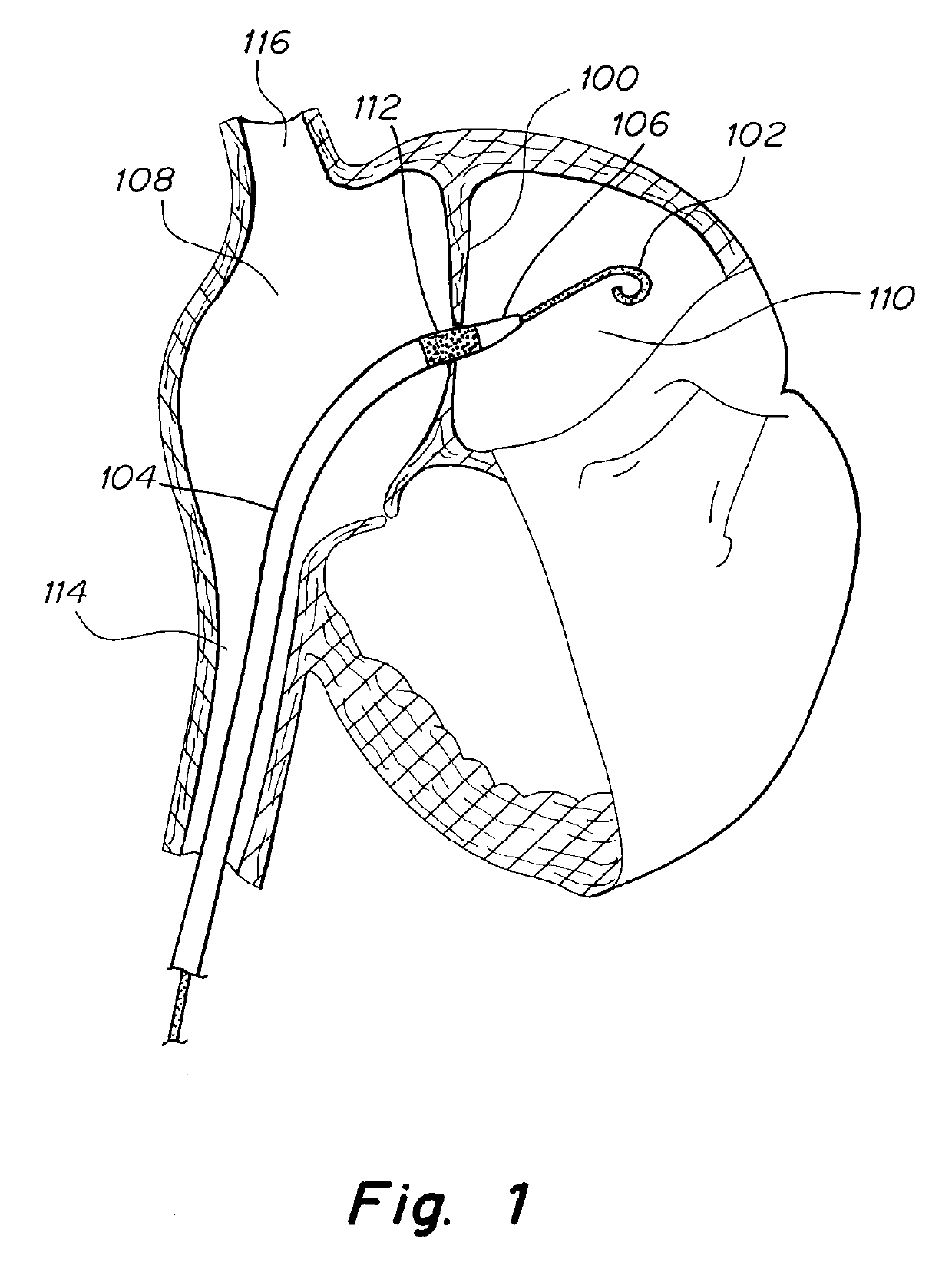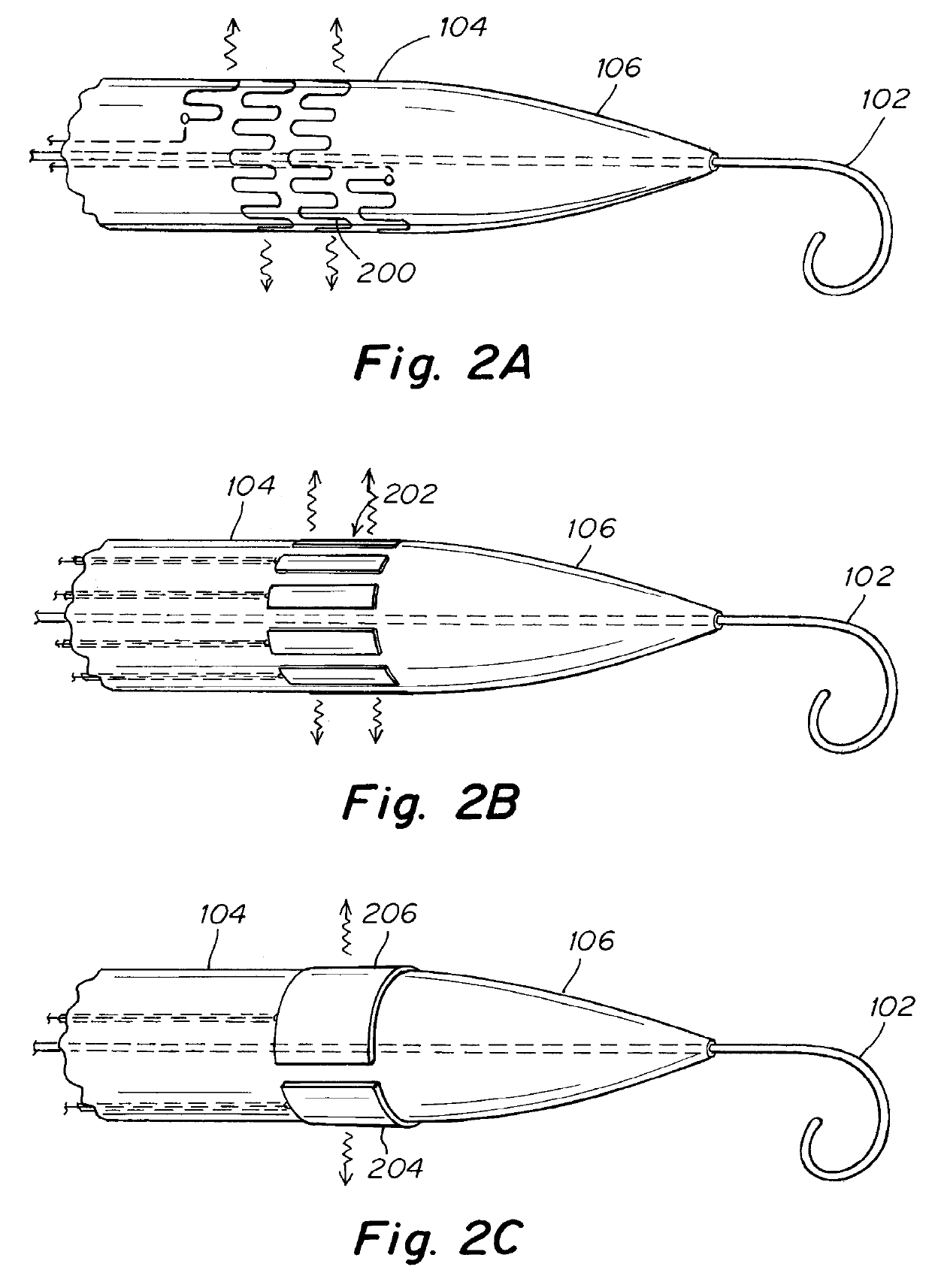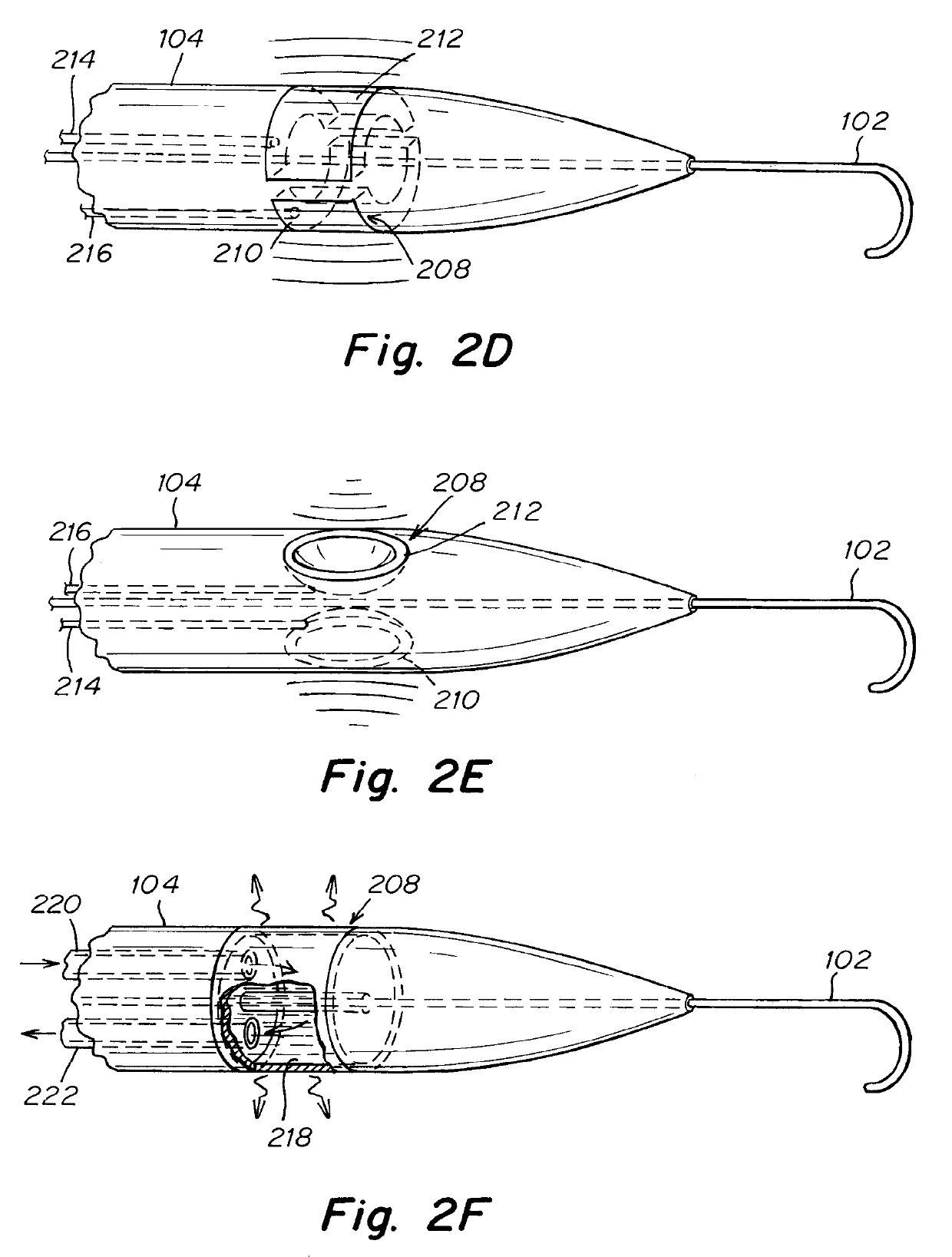Apparatus and methods to create and maintain an intra-atrial pressure relief opening
a technology of atrial pressure and opening, applied in the field of apparatus and devices for treating heart failure, can solve the problems of increased pulmonary venous pressure, shortness of breath, exercise intolerance, etc., and achieve the effects of reducing the pressure in the left atrium, and reducing the atrial pressure and pulmonary venous pressur
- Summary
- Abstract
- Description
- Claims
- Application Information
AI Technical Summary
Benefits of technology
Problems solved by technology
Method used
Image
Examples
Embodiment Construction
[0042]Referring to FIG. 1, an embodiment is depicted for treating heart failure. FIG. 1 shows an atrial septum 100 which has been penetrated by a wire 102 thereby creating a first diameter opening and further dilated to second substantially larger diameter opening with aid of a dilation means 106. The dilation means is a conical distal tip 106 of a dilation catheter 104 which is configured to allow for the user to dilate the first a diameter opening created by the wire 102. The wire 102 and dilation catheter 104 extend from the right atrium 108 and into the left atrium 110. The dilation catheter 104 is equipped with a treatment means 112 for delivering energy to the septum tissues in the vicinity of the first diameter opening being enlarged by the dilation means 106. In FIG. 1 the means for delivering energy is depicted as a stipple-shaded region on the dilation catheter 104. The treatment means 112 for delivering energy may be used to ablate the tissue near the second larger diamet...
PUM
 Login to View More
Login to View More Abstract
Description
Claims
Application Information
 Login to View More
Login to View More - R&D
- Intellectual Property
- Life Sciences
- Materials
- Tech Scout
- Unparalleled Data Quality
- Higher Quality Content
- 60% Fewer Hallucinations
Browse by: Latest US Patents, China's latest patents, Technical Efficacy Thesaurus, Application Domain, Technology Topic, Popular Technical Reports.
© 2025 PatSnap. All rights reserved.Legal|Privacy policy|Modern Slavery Act Transparency Statement|Sitemap|About US| Contact US: help@patsnap.com



